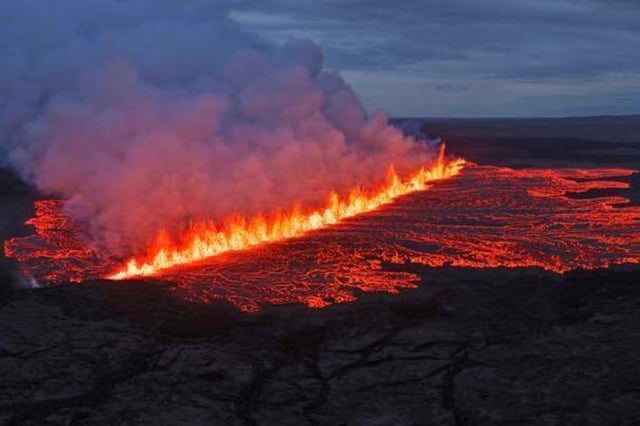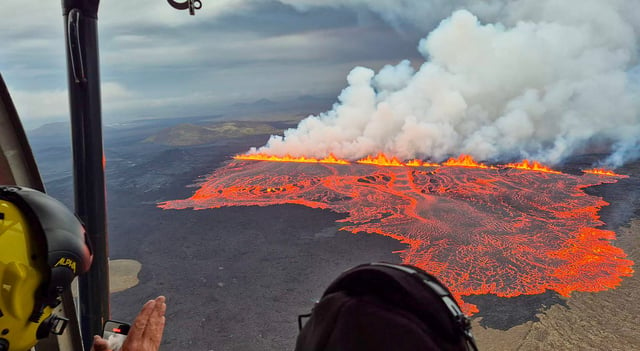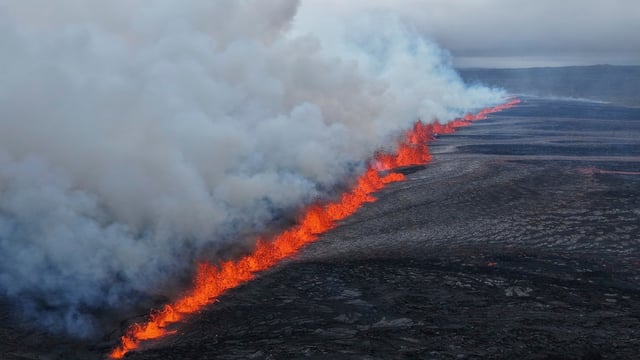Overview
- The eruption began just before 4 a.m. local time on July 16 after an intense seismic swarm signaled magma intrusion beneath the Sundhnúkur crater row.
- Magma forced through the crust created a fissure between 700 and 1,000 metres long, marking the twelfth event since the Reykjanes volcanic system reactivated in 2021.
- Residents and tourists were moved out of Grindavík and the Blue Lagoon resort as a precaution against small lava flows and elevated volcanic gases.
- GPS and ground-deformation data indicate this was a relatively small eruption with lava flowing away from infrastructure and no impact on Keflavík Airport operations.
- Volcanologists warn that the Reykjanes Peninsula’s renewed fissure-eruption cycle could persist for decades, underscoring continued monitoring and preparedness.


